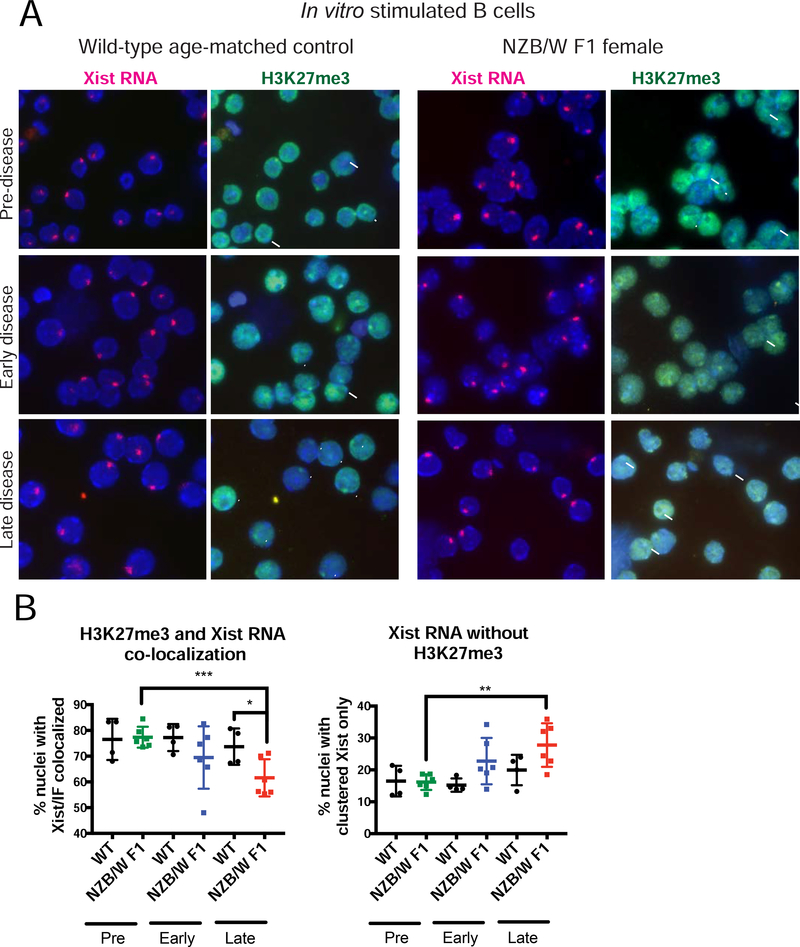FIGURE 4. Stimulated B cells from diseased NZB/W F1 mice lose Xist RNA and H3K27me3 co-localization at the Xi.
(A) Sequential Xist RNA FISH (red) followed by IF for H3K27me3 (green) for in vitro stimulated B cells from wildtype age-matched mice (n = 4) and NZB/W F1 B cells (n = 6) for each disease category (Supplementary Figure 1). Arrowheads denote H3K27me3 foci that overlaps with Xist RNA signal; Arrows denote nuclei that contain clustered Xist RNA at the Xi but lack co-localized H3K27me3 enrichment. DAPI nuclear counterstain is shown in blue. Representative cells collected from multiple independent experiments are shown. (B) Quantification of co-localization of Xist RNA signals and foci of H3K27me3. (Left) The percentage of cells with detectable Xist RNA clusters overlapping with a focus of H3K27me3. (Right) The percentage of cells containing Xist RNA signals that lacked detectable H3K27me3 focus. The mean across replicates and standard deviation of the mean is shown. Significance was determined by unpaired t test. *p<0.05, **p<0.01. *p<0.05, **p<0.01. Total nuclei counted: Pre-disease = 559, Pre-WT = 238, Early-disease = 486, Early-WT = 281, Late-disease = 543, Late-WT = 284.

